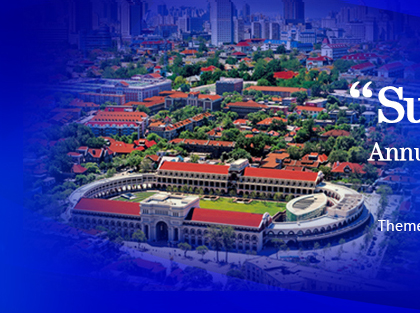After the founding of the People’s Republic of China in 1949, Tianjin became a municipality directly under the central government. After China adopted the policy of reform and opening up in 1978, Tianjin became one of the first cities to open to the outside world. Now, its economy and society develop rapidly.
At the new stage in the new century, the development and opening of Tianjin Binhai New Area was incorporated in the strategic layout of overall national development. It achieves rapid economic growth, and becomes more and more influential in stimulating the economic development in the Bohai Rim area. Binhai New Area has become a new economic growth peak of China after Shenzhen Special Economic Zone and Shanghai Pudong New Area.
Seizing this historic opportunity, Tianjin takes full advantage of the policy to accelerate the pace of building an international port city, as well as the economic center of northern China and an ecocity. It is constantly improving its innovation ability, service ability, and international competitiveness, playing an important role in the coordinated development of Bohai Rim area and the Beijing- Tianjin-Hebei region.
Canal Transportation (part)
The 6.8-meter-long painting of Canal Transportation, a work of art created during the reign of Emperor Qianlong in the Qing Dynasty, depicts the busy life along the Grand Canal: on the banks are willows, peach trees, gardens, farmhouses, stores, and temples; in the river are ships and boats going to and fro; merchants, officials, and boatmen are all busy for a living.
The earliest Tianjin pioneers in Jixian County
In 2015, 14 Paleolithic sites were discovered in Jixian County. More than 1000 stone implements were collected.
Judging by the geomorphologic and cultural characteristics, these sites belong to the early or middle Paleolithic Period, more than 100,000 years ago.
Zhu Di (1360-1424), the fourth son of emperor Zhu Yuanzhang, was appointed King of Yan in 1370. By launching a war, he seized the throne in 1402 and became the third emperor of the Ming Dynasty. He reigned for 22 years under the title Yongle.
In history, the name of Tianjin came from the enthrone ship of an emperor. Now, the city is still an ideal harbor for ambitious people to set sail for success.
Dragon Stamps: the first set of stamps in China issued in Tianjin
Tianjin is the birthplace of postal service in modern China. In July 1878, Tianjin Customs Post Office issued a set of stamps with pictures of dragons on them, hence the name dragon stamps. On the stamps are the Chinese characters: Post Office of Qing Dynasty. The stamps are of three different face values. The dragon stamps are the first set of stamps issued in China.
The first modern university in China — Tianjin University (formerly known as Peiyang University)
Peiyang University, the predecessor of Tianjin University, was founded in 1895 with approval from Emperor Guangxu with the name Tianjin Peiyang Western School (later renamed Peiyang University). The University hired the American Ding Jiali (1857-1930) as its first president, and its majors, curriculum and educational planning were based on those of Harvard University and Yale University. With “seeking truth from facts” as its motto, Peiyang University is known for its rigorous scholarship and down-to-earth work style. For over a hundred years, Tianjin University has trained a large number of outstanding talents for the state and society.
The first free trade zone in northern China was established in Tianjin
April 21, 2015 saw the official establishment of China (Tianjin) Pilot Free Trade Zone, which is to develop into an engine for the collaborated development and opening of the Beijing- Tianjin-Hebei region. With its business environment featuring internationalization, market-orientation, and rule of law, the free trade zone will play a leading role in China in system innovation, reform and opening up, while strengthening business relationships worldwide.
The roles of Tianjin in the collaborative development of Beijing, Tianjin and Hebei Province
National research and development base for advanced manufacturing; the northern core area for international shipping; demonstration area for financial innovation and operation; pilot area for reform and opening up.
In September 2015, The Bohai-rim Region Cooperative Development Program was approved by the State Council.
By 2030, a pattern of integration will have been basically formed in the Beijing-Tianjin-Hebei Region. Bohai-rim Region will become the most influential zone of economic cooperation in China.
|

